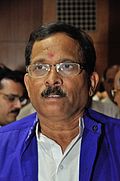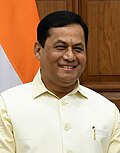Pseudoscience
A strong consensus prevails among the scientific community that homeopathy is a pseudo-scientific, [34] [35] [36] [37] unethical [38] [39] and implausible line of treatment. [40] [41] [42] [43] Ayurveda is deemed to be pseudoscientific [44] [45] [46] but is occasionally considered a protoscience, or trans-science system instead. [47] [48] Naturopathy is considered to be a form of pseudoscientific quackery, [49] ineffective and possibly harmful, [50] [51] with numerous ethical concerns about the practice. [52] [53] [54] Much of the research on postural yoga has taken the form of preliminary studies or clinical trials of low methodological quality; [55] [56] [57] there is no conclusive therapeutic effect except in back pain. [58] Unani lacks biological plausibility and is considered to be pseudoscientific quackery, as well. [59] [60]
There is no credible efficacy or scientific basis for any of these forms of treatment. [61]
Research
Two systematic reviews, one by The Lancet in 2005 and the other by the Australian government's National Health and Medical Research Council (NHMRC) in 2015, found no evidence that homeopathy was more effective than a placebo. [3] In a comprehensive review of alternative medicine (including ayurveda and homeopathy) conducted in 2000, the UK House of Lords Committee on Science and Technology was unable to find evidence to support the value of these treatments. Randomized control trials or RCTs for ayurveda and homeopathy have been extremely limited as of 2017. [3] Multiple systemic reviews have highlighted several methodological problems with the studies and trials conducted by Ayush and its associates in relation to developing an ayurvedic drug for diabetes. [62] A tendency to publish in dubious predatory journals and non-reproducibility by independent studies has also been noted. [63] [64] The Hindu reported in 2015 that India had yet to conduct a systematic review of any of the systems of medicine under the purview of Ayush. [3]
Drugs
The ministry (in conjunction with other national laboratories) has been subject to heavy criticism for developing, advocating and commercializing multiple sham-drugs (BGR-34, IME9, Dalzbone, Ayush-64 et al.) and treatment-regimes for a variety of diseases including dengue, [65] [18] [66] [67] chikungunya, swine flu, [68] asthma, autism, [69] diabetes, malaria, [70] AIDS, [71] cancer, [72] COVID-19 [73] [74] [75] and others despite an absence of rigorous pharmacological studies and meaningful clinical trials. [63] [64] [76]
A 2018 systematic review of traditional and AYUSH medicine noted the existing regulations to be inadequate for ensuring the safety, quality, efficacy and standardized rational use of these forms of treatment. Researchers also noted a lack of monitoring for adverse effects from the usage of these drugs and of contraindication trials. [8]
The ministry recommended the herb giloy as an "immune booster against" COVID-19 [77] and issued multiple press releases during the COVID-19 pandemic claiming the herb was safe. Later, multiple cases of liver damage were found in those with a history of giloy consumption. [78] The ministry backed its statement by pointing out that neither the content of the herb usage nor the authenticity of the plant, which could be identified with similar-looking plants, was analyzed. [79] [80]
Miscellaneous
The Washington Post noted the efforts behind the revival of Ayurveda as a part of the ruling party's rhetoric of restoring India's past glory. [4] It also noted that the Ayurveda industry was largely non-standardized and that its critics associated the aggressive integration of Ayurveda into healthcare services with the Hindu nationalist ideology of the ruling party. [4] There have been allegations coming out of right-to-information requests that it is the Ayush ministries official policy to not hire Muslims as trainers. [81]
Some researchers have argued that the provision of Ayush services is an example of "forced pluralism" which often leads to disbursal of incompetent healthcare services by unqualified practitioners. [8] [82] Ayushman Bharat has been noted to increase privatization of state healthcare facilities and compel rural populace into preferentially choosing alternative medicine, raising concerns about ethics. [17] [83] The proposal of integrating Ayush with western medicine has been criticized. [84] The Indian Medical Association (IMA) has expressed strong opposition to integrated medicine, [3] [85] [86] [4] often by using the term "mixopathy". [87] [88] In 2020 and 2021, the IMA held nationwide protests to demonstrate against federal changes issued by the Ministry of Ayush that permit ayurvedic practitioners to perform minor surgical procedures. [89] [90] [91]
The ministry had attracted widespread criticism after publishing a pamphlet titled Mother and Child Care through Yoga and Naturopathy which asked pregnant women to abstain from eating meat and eggs, shun desire and lust, hang beautiful photos in the bedroom and to nurture spiritual and 'pure' thoughts among other advice. [92] [93] In the aftermath of the COVID-19 pandemic, the ministry recommended Arsenicum album 30 as a preventive drug; the claim was without any scientific basis or evidence, and was widely criticized. [94] [95] [96]




